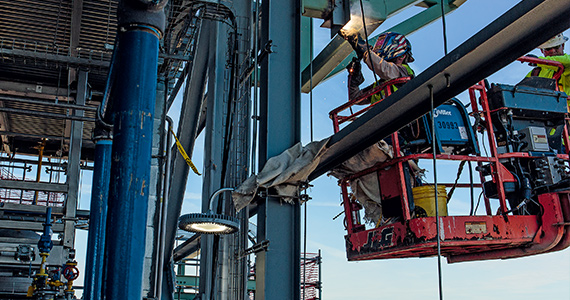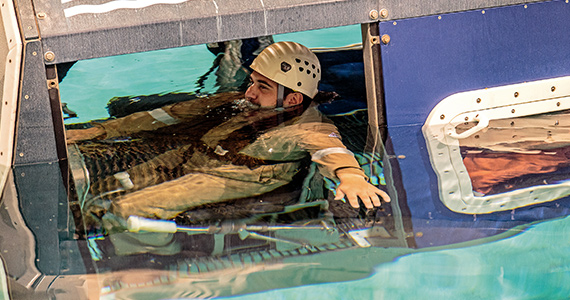There are days when this river does not look like a problem at all. On the contrary, in fact. As Sam Perkins starts the freshly fueled motor boat in the first light of morning, the water is clear and smooth in front of him. On the blue border between North and South Carolina, the river fills Lake Wylie, a large reservoir, as it travels further south – where a giant carpet of water lilies floats. The water flows past densely overgrown banks, from the Blue Ridge Mountains down to Lake Marion, and passes by the Charlotte metropolitan area during its 320-mile course.
Close to two million people live in the catchment area. Perkins points out that these two million expect almost everything from the Catawba River – everything from contemplative peace to unlimited water for industries, households, and recreational purposes. Perkins, who has a degree in marine science, is a kind of inspector here. »You have to keep an eye on everything,« he says as he pulls a wide headband over his ears to counter the sharp wind. »Otherwise, one day we will potentially have bigger problems here.«
Despite all the joys of being outdoors and in the nature, these excursions are not leisure trips. They are aimed at determining the state and the quality of the river water, which Perkins regularly checks on behalf of a non-profit initiative, the »Catawba Riverkeeper«. It is his employer and his home in spirit, which also provides the boat that he now maneuvers against the current – past two fishermen on a wooden pier, and then past the Clariant factory premises. Once Perkins is near a wastewater treatment plant, he takes a routine water sample.
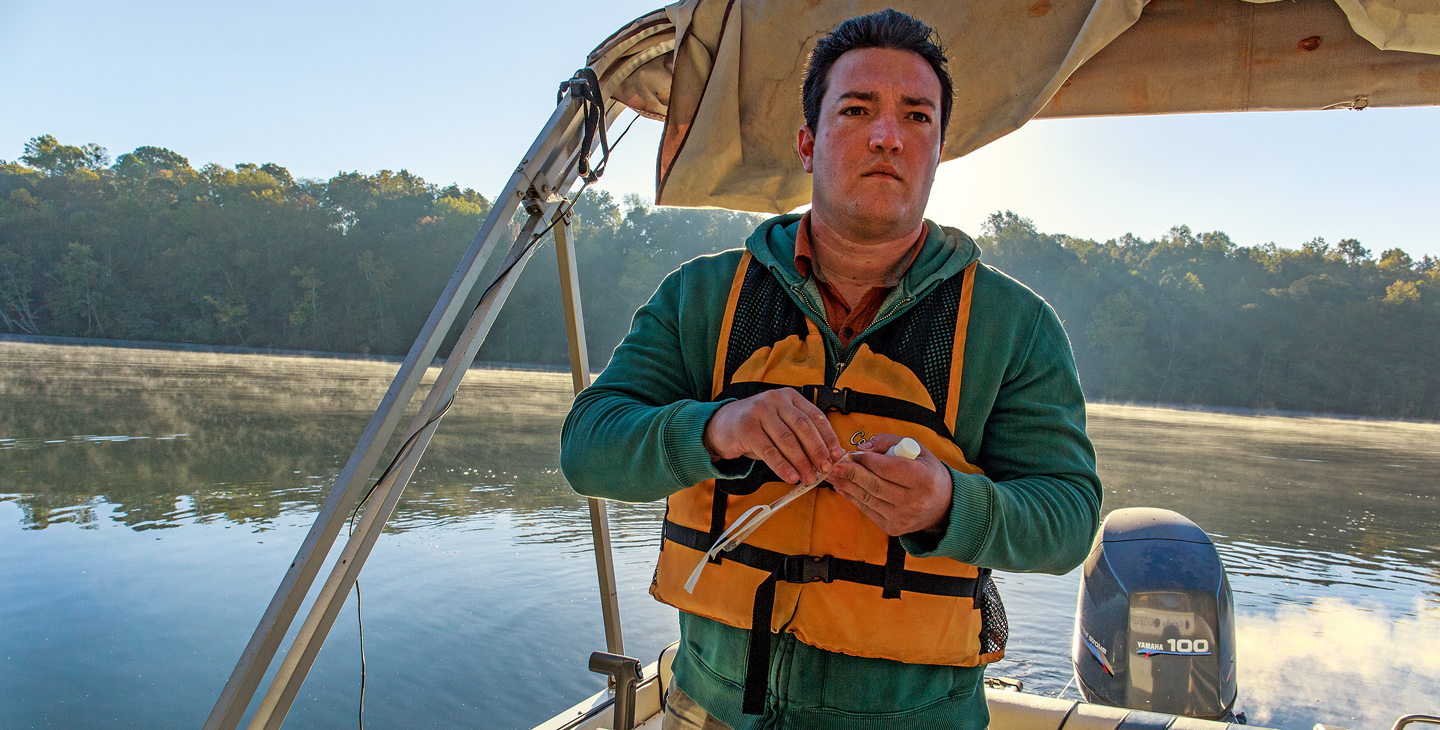
»Your river depends on you as much as you depend on the river.«
»I would be cautious about eating the fish caught here,« he says. For him, this concern stems from a variety of sources, including contaminated ash from the last soon-to-be-discarded coal power plants, frequent soil erosion flushing more toxins into the river, and the discharges from some outdated sewage treatment plants.
This has not led to an urgent problem yet, Perkins believes, but there is a reason that the Catawba was at the top of a list of most endangered rivers in the United States a few years ago. In addition, so many people have moved to this area recently, and more continue to come. That’s the big challenge. That is why the Riverkeeper brings the region’s collective awareness to the issues by holding numerous activities throughout the year. Organizing information days, summer festivals and community garbage removal events.
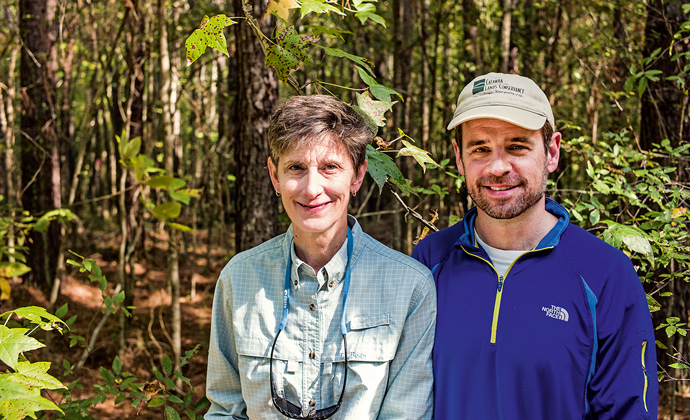
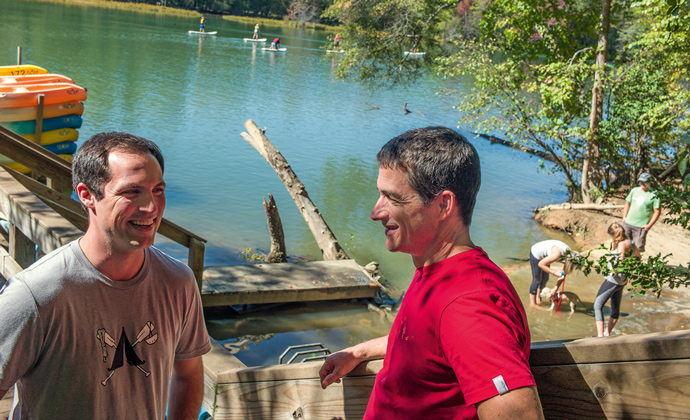
But having a clean-looking river has more benefits than the aesthetics. This is starting to be understood slowly in the backyard of Charlotte, the second most important financial center in the United States. Beyond the tall office towers in the city of 800 000 residents, a retreat area has become alarmingly popular. The daily flow of commuters feels as intense as that of megacities around peak rush hours. Similarly, the real flow, the one with water, needs to put up with a lot. It also simultaneously needs to give a lot, because so many use it: around a dozen power plants, 24 counties in two states and countless companies.
The Clariant factory is also located directly on the Catawba River. A plant with approximately 150 employees, it is located in Mount Holly, not even 20 miles away from its main office in Charlotte. Intermediate products for personal care, household cleaners, and de-icing materials are manufactured in three production halls. On the opposite side of the river, in Mecklenburg County, Clariant, or, to be more precise, its previous companies, operated a second plant in which dyes and other agents for jeans and textiles were made until production was stopped in 2005. The facility was retired partially due to environmental problems, such as inherited liabilities from previous operations.
That was the right decision to make, especially for someone like Michael A. Teague, Head of Regional Sustainability & Regulatory Affairs for Clariant in North America. »Industry makes a positive contribution to the economy, but historically, it often left residual impacts on the environment,« he says in retrospect. The Doctor of Chemistry remembers that the Catawba was once called the »Rainbow River« because the textile mills operating at that time allowed their colored waste water to drain into its bed untreated. He was one of the »Change Agents« in the company who continued the dialog early on with the authorities and citizens’ initiatives such as Riverkeeper. In doing so, a new path was forged in which profitability and environmental protection were considered equal – for the sake of sustainability.
»We want to be certain that our production does not compromise the river,« says Michael. »We have a footprint here, and we have an obligation.«
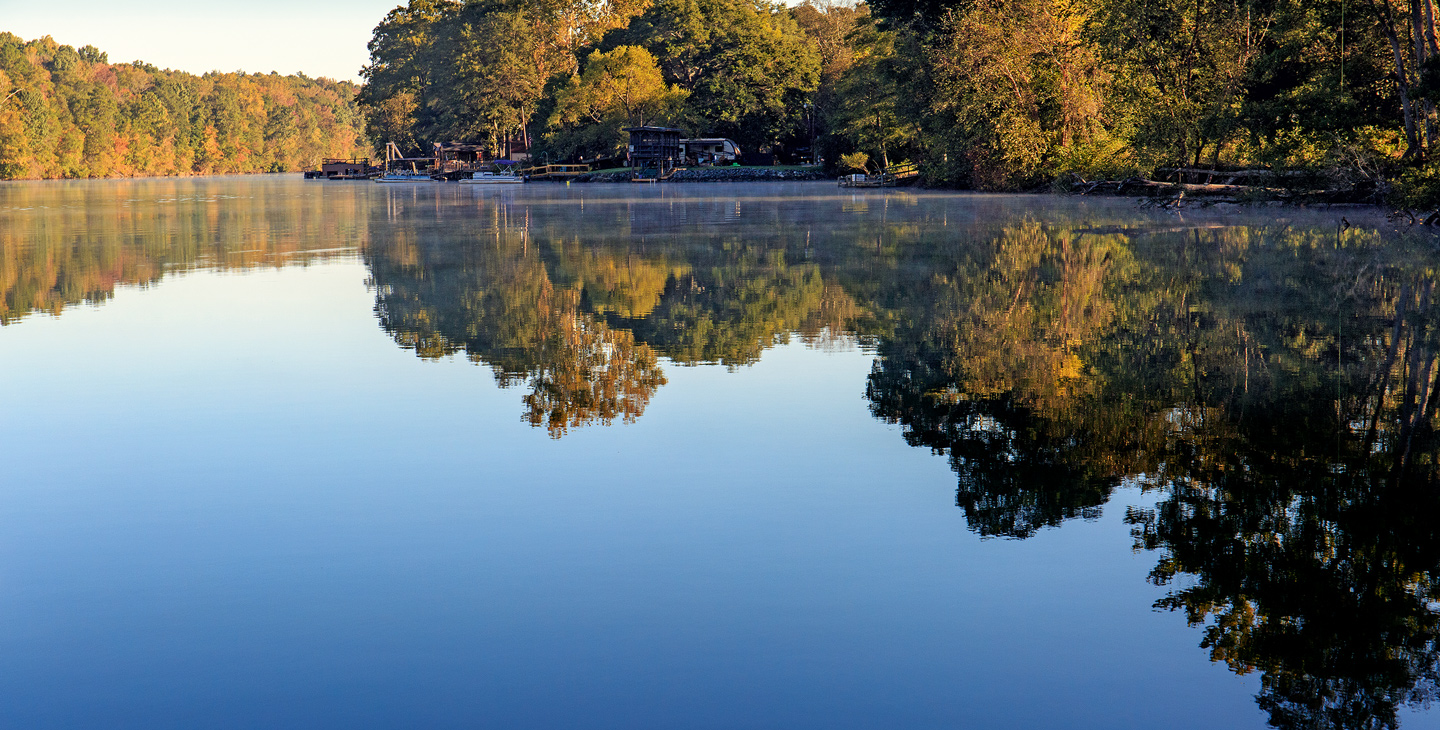
These are clear signals of a paradigm shift. Over the years, internal sewage treatment equipment and detention reservoirs have continually been upgraded at the remaining plant in Mount Holly. Here, the waste water is first thoroughly filtered before it is released to the municipal wastewater authority for additional treatment, before ultimately entering the river in a harmless state.
The area around the retired factory is now devoted to new uses. Michael’s satisfaction is quickly felt when he shows visitors what has developed in the area since the factory shut down.
ReVenture Park is located there, which builds on the infrastructure of the former factory: an invitation to eco-industrial start-up companies to expand on favorable terms on the repurposed grounds. To this end, an independent project manager has entered into a rent-to-buy agreement with Clariant. Gradually, young companies are beginning to settle there. Green duckweed, a biomass source for the production of alternative energy, shimmers on the surface of a heated pond. Silkworms are raised on a plantation with mulberry bushes. Their thread can even be used to strengthen body armor for the US armed forces. There are forward-looking projects made as sustainable as possible in every way.
Closer to the river, there are rolling hills amongst forests and meadows – a nature reserve to which Clariant has also entrusted several hectares to Catawba Lands Conservancy (CLC) for supervision and care. The non-profit land trust puts together these kinds of donations like puzzle pieces in order to preserve the areas along the river from private or commercial use. CLC aims to preserve clean water, biodiversity and local farms as well as to provide public access. Along these lines, CLC also acts as lead agency on a decades-long project – the Carolina Thread Trail – which is expected to weave through 15 counties, joining scenic and historical sites into one picturesque trail.
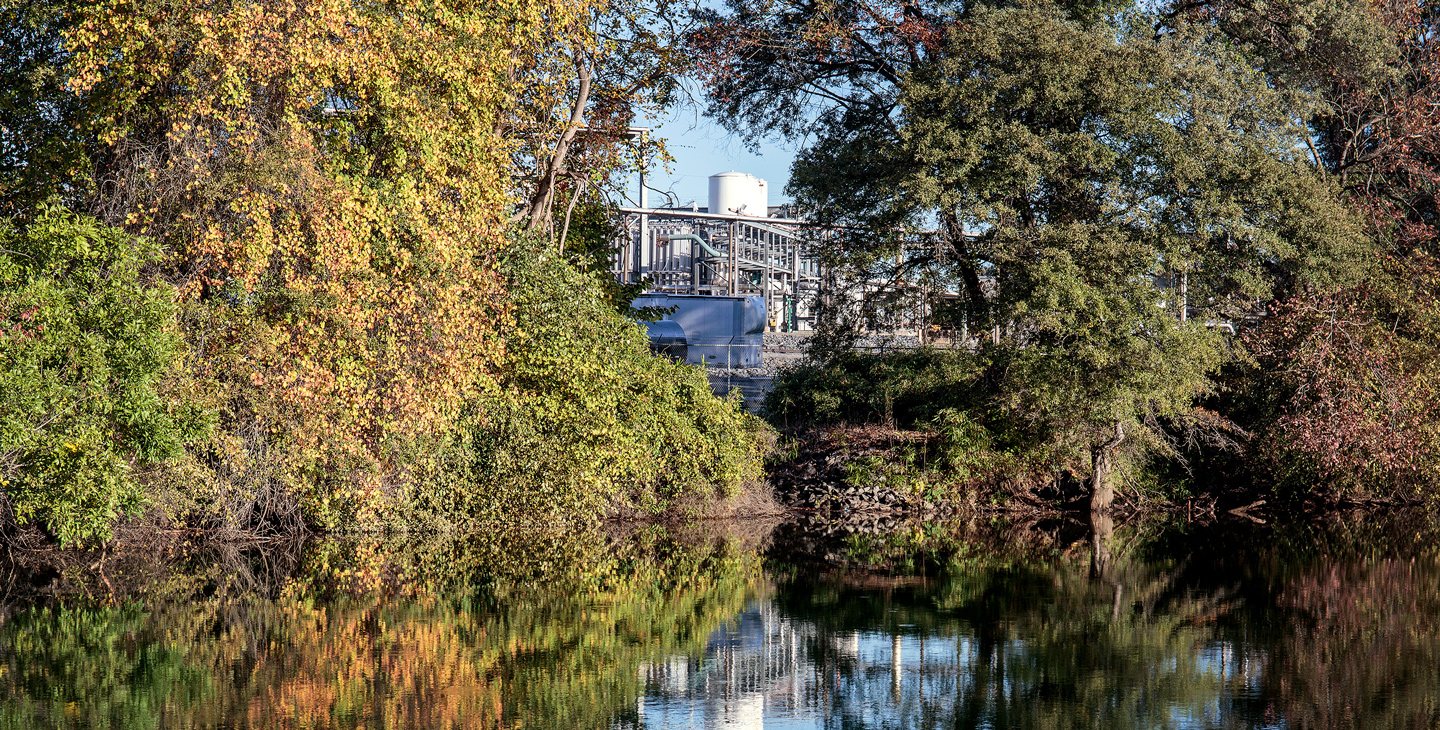
»We want to be certain that our production does not compromise the river.«
More than 220 miles of the planned trail network are already established, such as the area near Long Creek, a tributary of the Catawba. Here, the path also runs through the U.S. National Whitewater Center, a lively water sport area where excursionists and top athletes alike race down the artificial whitewater courses in canoes and rafts. Or you can get to the river via a narrow access point where you can try out a canoe similar to what the Catawba Indians used to use for fishing, back during a time when the area was not as populated.
People on the river – this is the exact meaning of »Catawba« in the language of the original inhabitants. This word encompasses everyone: from the hikers and bikers on the »Thread Trail« to the shift workers in Mount Holly, Sam Perkins, the inspector in the green jacket, and Michael Teague, nature enthusiast and facilitator of sustainability. If more people understood the implications of our treatment of water sources, Perkins is convinced they would do more to protect it, because »your river depends on you as much as you depend on the river.« It is just the beginning and a flowing change for the better.

